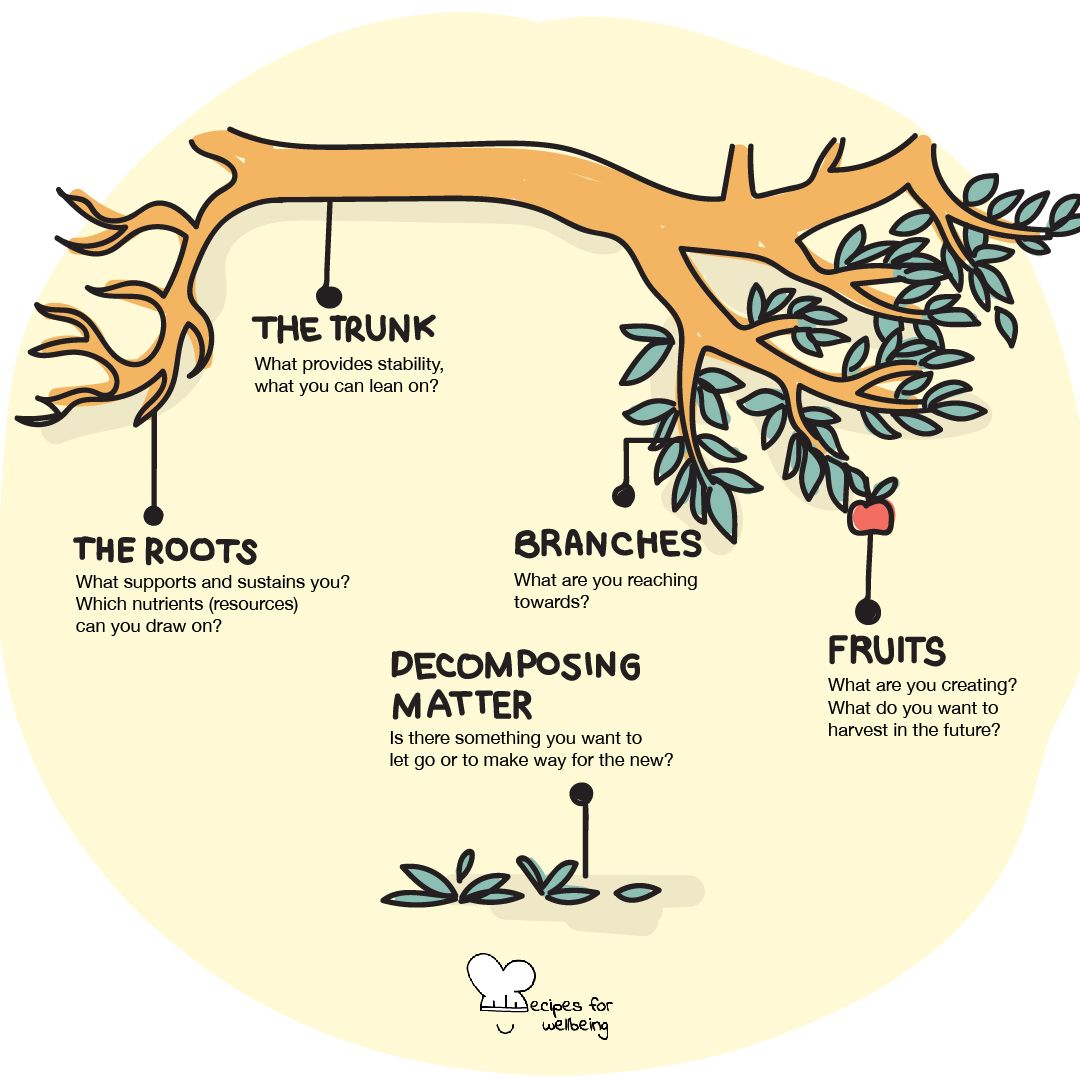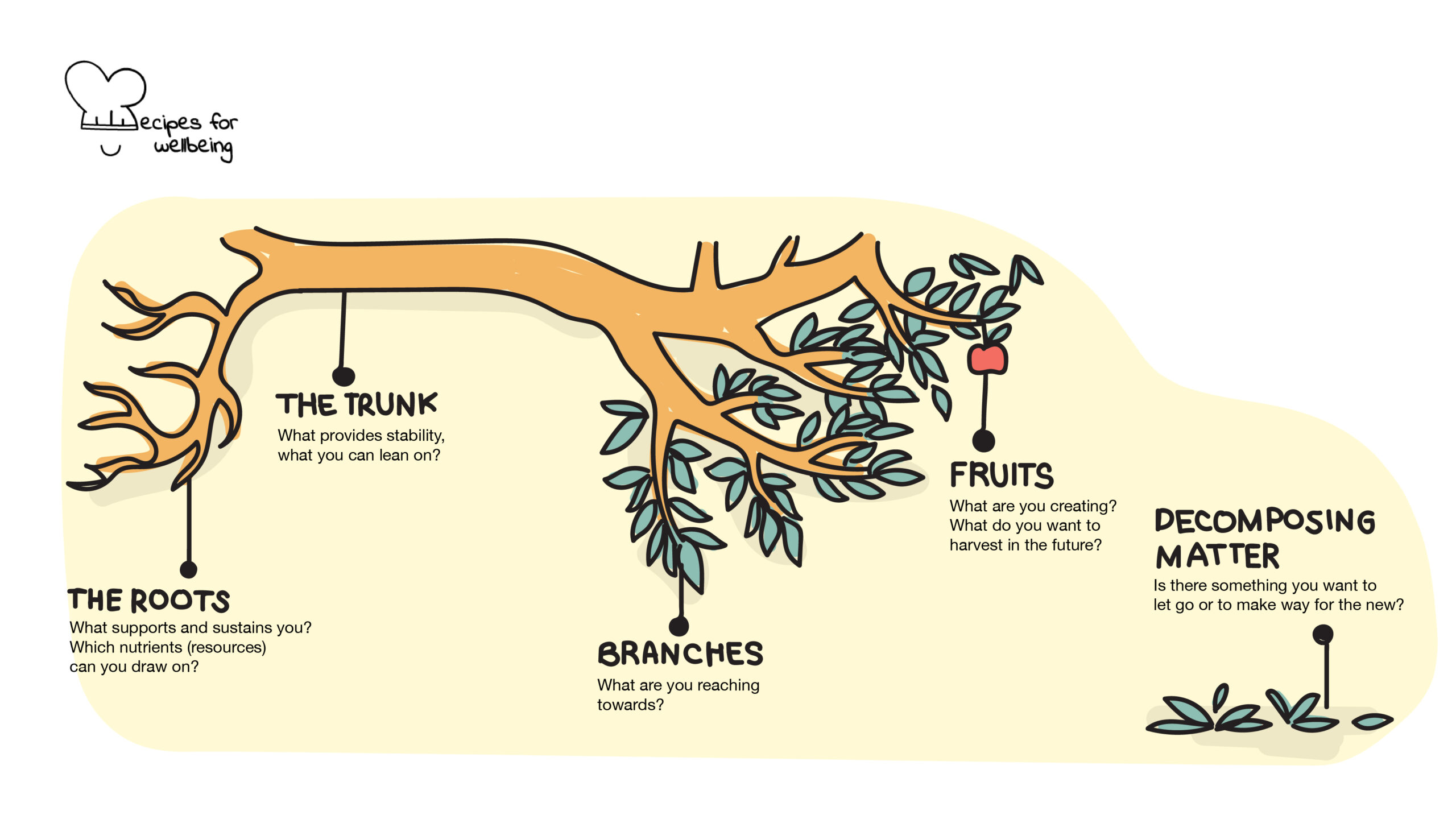
Tree reflection
Reflection is one of the most underused yet powerful tools for success. ―Richard Carlson
👥 Serves: 1–20 people
🎚 Difficulty: Easy
⏳ Total time: Up to 1 hour
🥣 Ingredients: Pen and paper, a timer
💪 Nutritional values: Reflection, Awareness, Perspective, Appreciation, Direction

Tree reflection
📝 Description
Using the metaphor of a tree to reflect on projects or situations.
This activity builds on the distinctive elements of a tree to invite a nuanced reflection around a project, a situation, or a challenge. It can be facilitated as part of a workshop, a conference, or a team process. This reflection process helps teams and groups connect to what matters most, open towards the people and resources around them, and find the courage to let go of what no longer serves them or their purpose.
This recipe has been kindly donated by Unity Effect.
👣 Steps
Step 1 – Preparation (5’)
Hand out a sheet of paper and a pen to each participant and invite them to think about a project, a situation, or a challenge. If doing this with your team, encourage them to choose a work-related project, situation, or challenge. If you would like that everyone reflects on the same situation, clarify this in your framing so everyone is on the same page. Invite participants to take a few breaths and connect with themselves, from top to bottom, from head to heart.
Step 2 – Roots (5’)
Kick off the reflection from the roots and ask participants to journal about the following: What supports and sustains you in that project, situation, or challenge? Which nutrients (resources) can you draw on?
Step 3 – Trunk (5’)
Now move onto the trunk, representing stability: What provides stability? What can you lean on?
Step 4 – Branches (5’)
From the trunk, move to the branches: What are you reaching towards?
Step 5 – Fruits (5’)
Now, onto the fruits: What are you creating? What do you want to harvest in the future?
Step 6 – Decomposing matter (5’)
Finally, turn your attention to decomposing matter: What needs to die/decomposee for new life to grow?
Step 7 – Harvesting (up to 30’)
If you are doing this alone, take a few minutes at the end to observe and write down what is present for you now and what might have shifted for you during the process. If doing this with a group, we encourage you to divide participants into small groups so they can take ~15 minutes to share their reflections. And if you are doing this with your team, especially if on the same project, we advise you to spend at least 30 minutes harvesting together.

